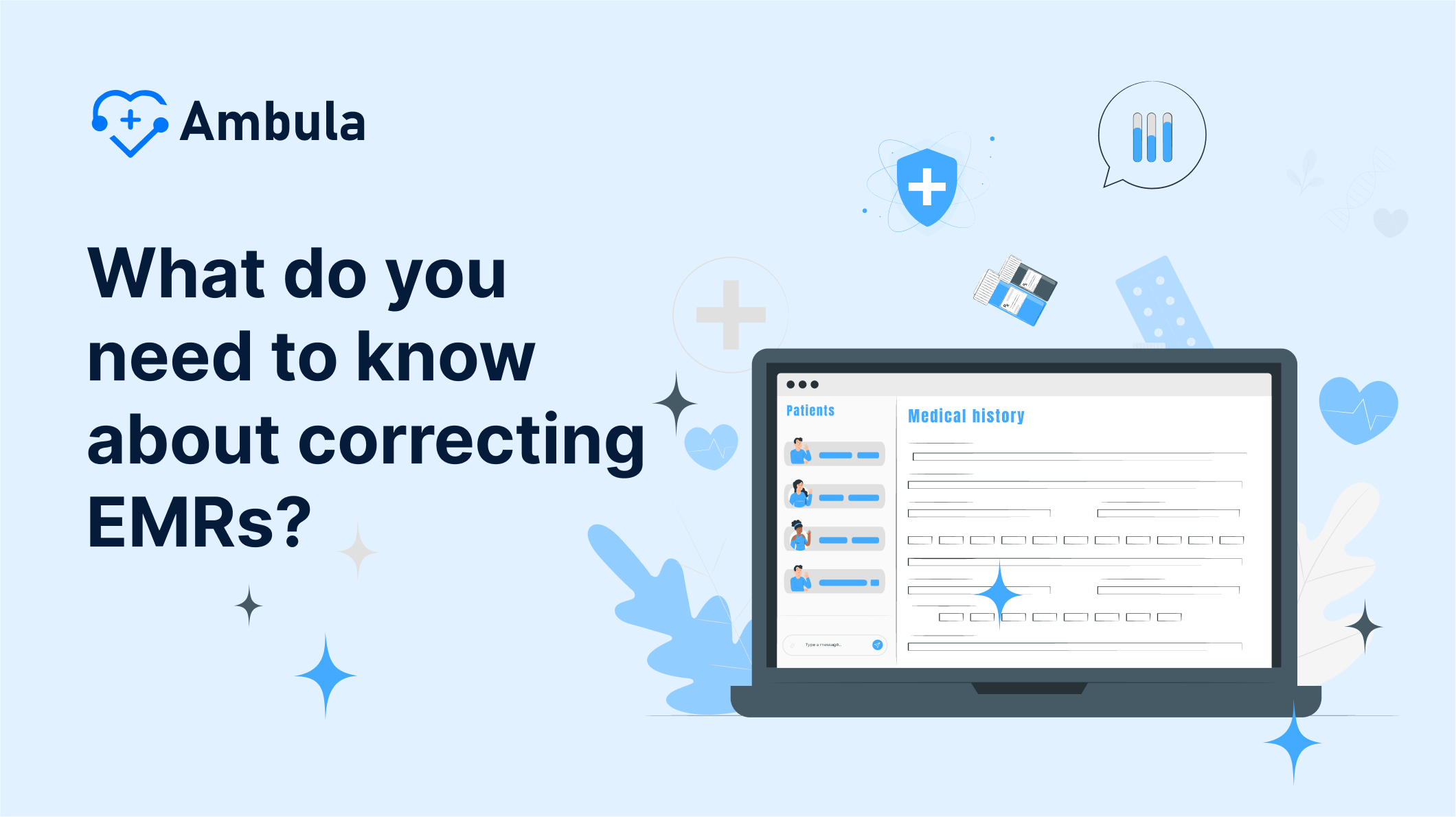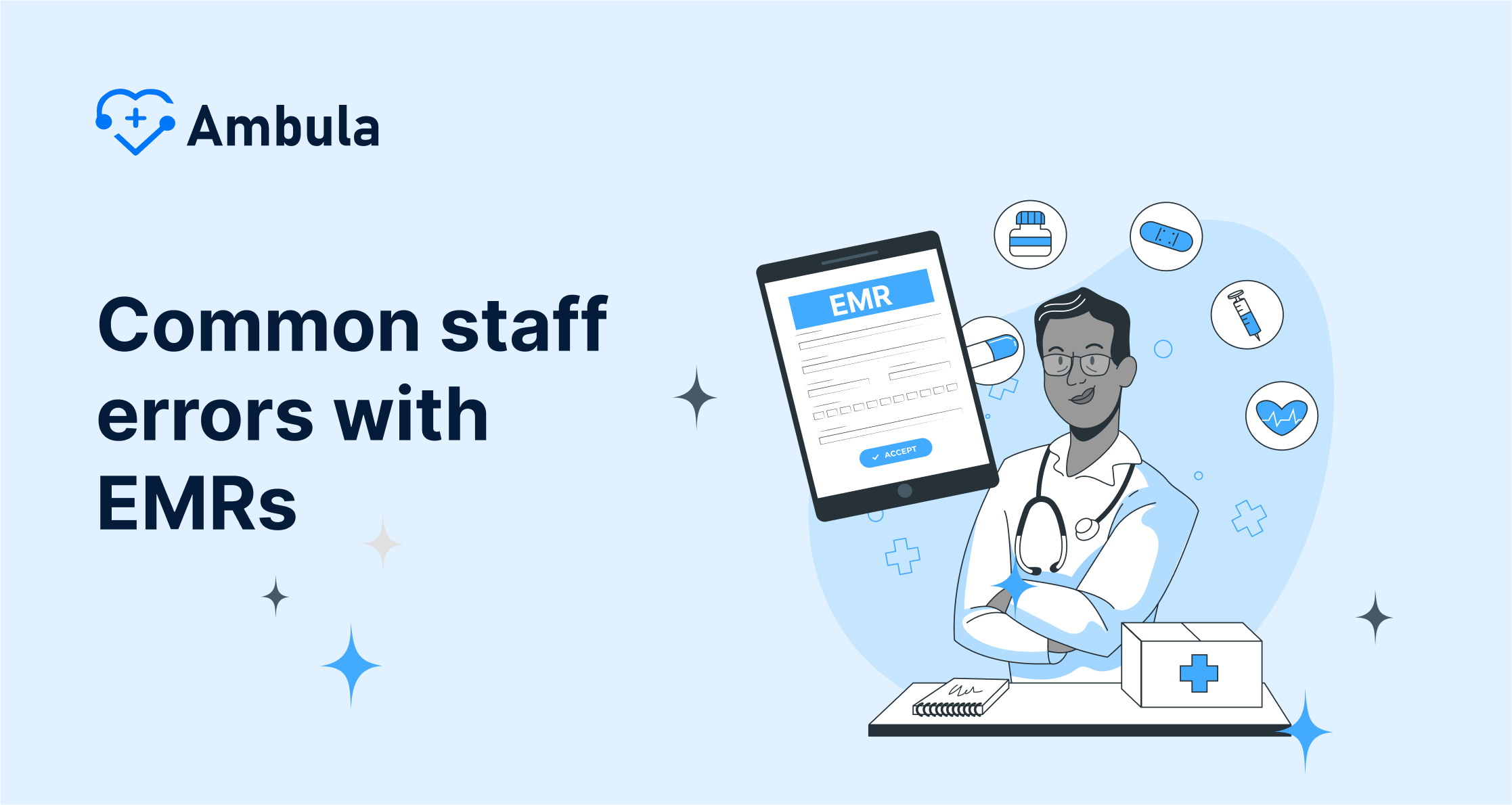Topics:
- What do you need to know about correcting EMRs?
- Further steps to take
- Common staff errors with EMRs
When mistakes happen, how should an entry in a patient’s EMR be corrected? EMRs or electronic medical records save patient data. Undoubtedly, EMRs offer us many benefits. These range from instant access to data to review a cross-section of medical reports and patient information. Yet, everything has some flaws. Because the data comes in an electronic form, you can change it easily.
Thus, procedures and policies must ensure that you watch the mistakes in medical information. And this is how you’ll be able to keep the integrity of patient information. Consequently, you should know the initial steps in applying corrections to your EMR.
What do you need to know about correcting EMRs?
To learn how should an entry in a patient’s EMR be corrected, start by accessing the EMR. Firstly, make sure that the information is an error. When you doubt the information of another doctor, speak up. So, this way, you’ll be reassured that you will not change some valid data. When it is not your mistake, you’d better ask the responsible party to change it themselves.
Secondly, add an addendum to the initial entry. Essentially, you should state “addendum on the document before correction. Be careful not to delete the original data and then rewrite it. Besides, clearly state the reason you flagged the addendum correction.
Thirdly, enter “late entry” for missing data. Sometimes, a doctor notices that nobody has documented the data fully or at all. In this case, document immediately the additional data in your EMR. Remember to add the “late entry” to the documentation before providing more data.
Check out these articles after you’re done
Further steps to take
Now, how should an entry in a patient’s EMR be corrected?
1- The authentication of the data: Once you finish adding an addendum or a late entry, digitally sign the entry. Then you need to put your credentials and full name. Date and time are also important for the signature stamp.
2- The retrievability of an original document: A medical record of any shape is legal. Consequently, you cannot remove or make parts of an active record inaccessible. Ensure storage and accessibility of any original document (the error included).
3- Ask questions and review procedures and organizational policies: every healthcare institution has procedures and policies for handling errors in EMRs. Contact health information management to learn how to handle an error.
Common staff errors with EMRs
We seek error reduction after finding out how an entry in a patient’s EMR should be corrected. To avoid errors, you must be aware of them first. Here are some errors your staff might commonly made:
1- Misidentification of the patient:
One of the most common mistakes in healthcare is patient ID errors. The impact of errors in patient identification can be disastrous. Extremely, think of having a patient undergo the wrong surgery. The cost of such an error could be the entire collapse of an organization.
2- Errors in prescription
when these types of errors occur? First off, it could be an error in the entered information. Maybe your staff wrote the correct information but in the wrong place. Or, you overlooked some flags. Not only does a prescription error lead to death and injury, but also to money loss. Fortunately, you can train your users to ensure they understand the proper workflow. Therefore reducing the error rate.
3- Errors in billing
under perfect conditions, medical billing remains complicated and requires effort. Your billing department has to know how to surf through the nuances of each insurer. Because every insurer has special claim processes. A rejection will occur if you don’t file the claim according to the payer’s instructions. Sometimes, your billing department makes the mistake of entering the wrong CPT, for example. In time, little errors in billing accumulate, and a big load of money is lost.
4- Patient data cloning
Good documentation is key to good care. Yet charting is not a favorable duty. So, staff copies and paste or clone patient data from past meetings. Notes to reduce charting time. Surely this saves time at first, but it gives you more work in time. “Note bloat” happens with cloning. By definition, it is when you have charts with blocks of text with similar data. This makes picking relevant data hard. The tracking of progress becomes harder too, and many mistakes occur.
5- Week EMR management and setup
This is the least contained error, impacting the whole institution. By itself, an EMR is a tool. Yet when it’s well designed, you customize it and tweak it to make its usage easier. Don’t change your process to match the EMR, but adapt it to suit you.
In the end, if you want to avoid it. Error, start with setup. Still, this is not solely an IT task. All in all, it’s a collaboration between IT, clinical staff, and informatics. Always pinpoint the mistake before trying to seek solutions. Of course, your EMR will work better with certified staff, and so will your practice.
Recognizing the Need for a Correction
Spotting an error in an EMR isn’t always as simple as a typo or an incorrect date. Sometimes, it’s about mismatched data or a trend that doesn’t add up. You may notice this during a routine review or cross-referencing with other healthcare records. Stay vigilant; catching these nuances is crucial for accurate patient care.
It’s a collective effort—everyone on the healthcare team has a role in ensuring the EMR reflects the true state of a patient’s health. If something seems amiss, take it seriously. Whether you’re a nurse double-checking medication dosages or a specialist reviewing a consultation note, your attention to detail could be pivotal.
Quality checks become your safety net. Regular, systematic reviews of EMRs can highlight inconsistencies that might otherwise go unnoticed. Consider implementing a routine where you critically examine entries during each patient interaction. This practice safeguards against errors and embeds a culture of continuous improvement in your work environment.
When errors are identified, embracing a non-punitive approach to reporting is key. Encourage a culture where staff feels comfortable bringing forward mistakes without fear of unnecessary reprimand. This openness leads to more frequent and timely corrections, ultimately enhancing patient care.
Patients themselves can be allies in this endeavor. Empower them to review their records and raise concerns if they spot discrepancies. After all, no one knows their health history better than they do. Providing clear channels for patients to communicate potential errors can further bolster the accuracy of your EMR entries.
Training and Education
Regarding EMR correction protocols, ongoing training, and education are non-negotiable. You’re in an environment where health tech is perpetually evolving, and staying in the know is critical for maintaining patient safety and record accuracy.
First off, consider the orientation sessions for new staff. Please ensure they’re comprehensive, walking healthcare providers through the EMR system with a fine-tooth comb. It’s not just about learning to navigate the system; it’s about understanding the gravity of accurate record-keeping in patient outcomes. Regular refresher courses can also keep seasoned staff up to speed with updates in EMR software and correction protocols.
Hands-on workshops are your friend. They provide a safe space to practice EMR entry and correction without real-world consequences. Simulation scenarios can be particularly effective, replicating common errors and guiding through the correction process. This practical approach reinforces protocol and builds confidence.
Don’t overlook the power of e-learning modules. They offer an accessible and flexible way for busy healthcare professionals to keep abreast of best practices in EMR management. Bonus points for including interactive elements and quizzes, which can help cement knowledge.
Feedback mechanisms play a pivotal role as well. Create avenues where healthcare professionals can share experiences, challenges, and practical tips. Peer-to-peer learning is incredibly valuable—you often find the most practical advice comes from a colleague down the hall.
Invest in a culture of continuous learning. This might mean scheduling regular meetings to discuss updates, common errors, and case studies, where you can collectively dissect what went well and what didn’t. It’s this collaborative environment that fosters expertise and attentiveness in EMR management.
Ensuring Patient Involvement
Engaging patients in their health record management is a no-brainer. After all, it’s their information, their history, their life. You’ve got to empower them – it’s about transparency and tapping into an invaluable resource for maintaining record accuracy.
Let’s start with educating patients on their right to access their EMR. Make it straightforward for them to view their records, whether through an online patient portal or other secure means. Walk them through the process, ensure they know how to log in, and let them know you encourage their involvement.
Once they’re in, they’ll need to know what to do if something doesn’t look right. Establish a clear, user-friendly process for patients to report inaccuracies. Whether it’s a dedicated hotline, email address, or feature within the patient portal, make sure they know where and how to reach out.
Now, this isn’t just about correcting typos. It’s about making sure their medical history is captured correctly. This involvement can be vital in spotting medication discrepancies, outdated information, or even omitted medical history that could influence their current treatment plans.
Always respond promptly to patient queries or concerns about their records. It shows you’re taking their input seriously, building trust. Plus, a quick response means errors can be rectified faster, mitigating any potential issues in their care due to incorrect information.
If you have any questions about EMR errors or EMR in general, call Ambula Healthcare Team: at (818) 308-4108! And now discover an Ambulatory surgery center vs an Outpatient hospital!










